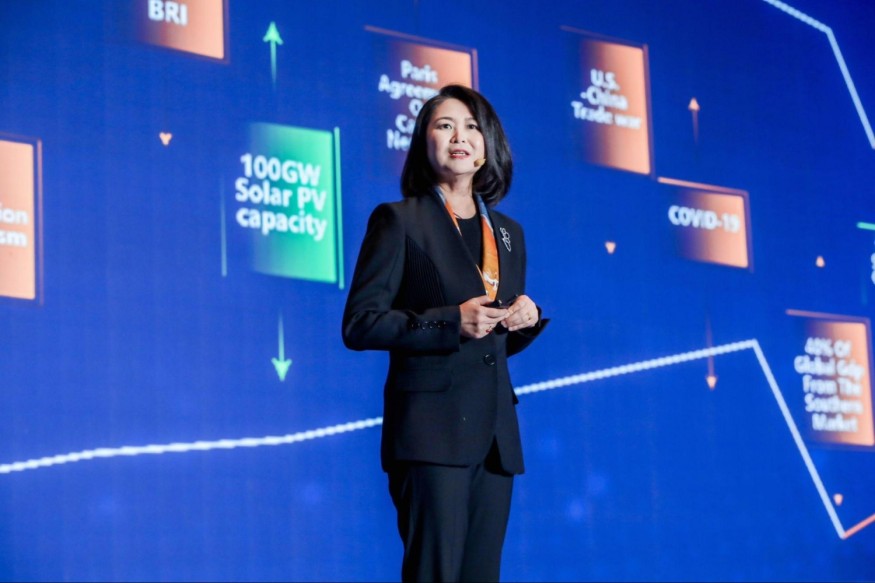As the world seeks to reduce its greenhouse gas emissions to mitigate the effects of climate change, there is a huge need to replace harmful fossil fuel-based energy sources by transitioning towards green renewable energy sources. Leading smart energy solutions provider CHINT Global has been at the forefront of this transition since its founding in 1984.

At the 10th CHINT International Marketing Forum (CIMF) held in Shanghai, China, October 11 to 14, 2023, the industry leader brought together more than 300 guests from more than 60 countries, all leaders in the fields of electric power, new energy, industrial, power distribution, and other segments. Under the theme "Nexus: Empower a Boundless Energy World," CHINT showcased its innovations in smart energy and green energy, reinforcing its commitment to aid the energy transition under China's dual carbon strategy.
During her speech at the 10th CIMF, CHINT Global President Lily Zhang shared her observation that there are two emerging cycles that have a huge effect on the transition towards renewable energy. The first cycle is the regional globalization cycle, encompassing the cyclical trend of declining then rapidly rising trade volumes among major economies. In the past two years, there has been a huge shift in the traditional global trade patterns.

According to Zhang, there are two major trends—first is that global supply chains are becoming more and more decentralized, and second is that the share of trade will increase between neighboring regions. She predicts that a less centralized global supply chain will lead to the faster spread of industrial and technological capabilities globally. These two trends will push forward industrialization and urbanization in various regions of the world over the next decade. In turn, this will create a higher demand for investments in electrification. Furthermore, these regional differences are likely to fuel innovation among regional businesses.
The second cycle Zhang observed is the New Energy System cycle, where the rapid cost reduction of clean energy, technological advancements, and the growing adoption of decarbonization worldwide are creating a significant and accelerating transformation in the energy system. The transition to a low-carbon and flexible power system is driving advancements in power equipment technology. Concurrently, the active distribution network and end-use electrification are fueling innovations in how energy is distributed and consumed.
Zhang says that distributed energy technologies and digital advancements are reshaping the traditional energy supply and demand dynamics. This means that energy consumers can also become energy producers. With multiple players on the energy value chain taking on various roles, she anticipates that the energy system and energy equipment will acquire new commercial value, potentially giving rise to innovative business models.
Amid these cycles, Zhang and CHINT have identified three growth drivers—from global value chains to globally connected local value chains, from client value-driven to value sharing, and from cost-driven to sustainable innovation.
To harness the opportunities created by these two cycles, CHINT will accelerate the development of a full-function organization platform, especially enhancing the development of its regional capability platform, aiming to achieve its "China to global, global to local, and local to regional-global" innovation strategy.
Zhang says that CHINT is looking to strengthen its regional supply chain. It plans to double its factory count from its existing ten factories. CHINT will use four different models to define its factories, enabling agile responses to local market demands, especially in its four pilot markets. The company is integrating different parts of the industrial chain, teaming up with local partners to complement each other in areas like supply chain, R&D, production, and sales.
In various markets, CHINT will implement a "one park, one institute, one fund" collaboration model, work together on new technology and manufacturing based on what the market needs, and then bring it all together for commercial use.
"We believe that the fusion of green energy systems with various energy usage scenarios is a wellspring of innovation," Zhang says. "CHINT is increasing its investment to take advantage of various business opportunities. On one hand, we'll delve into opportunities to enhance the efficiency of smart low-carbon energy systems. And on the other hand, we'll combine efforts with clean energy systems to explore new energy usage scenarios. Looking forward to the next CIMF in 2025, we will definitely navigate the trends to accelerate forward using the three growth drivers. Through regional globalization, diverse industry models, and green energy empowering various sectors, these drivers will continuously assist us in achieving sustainable growth."












